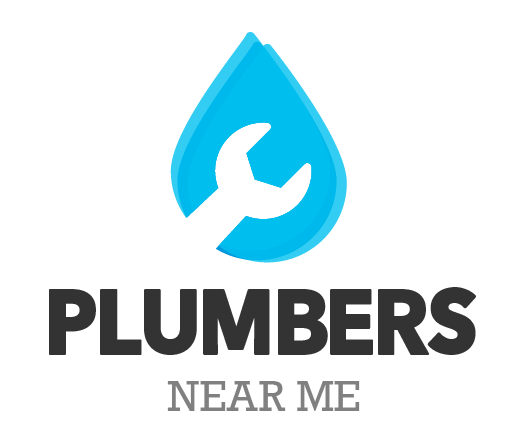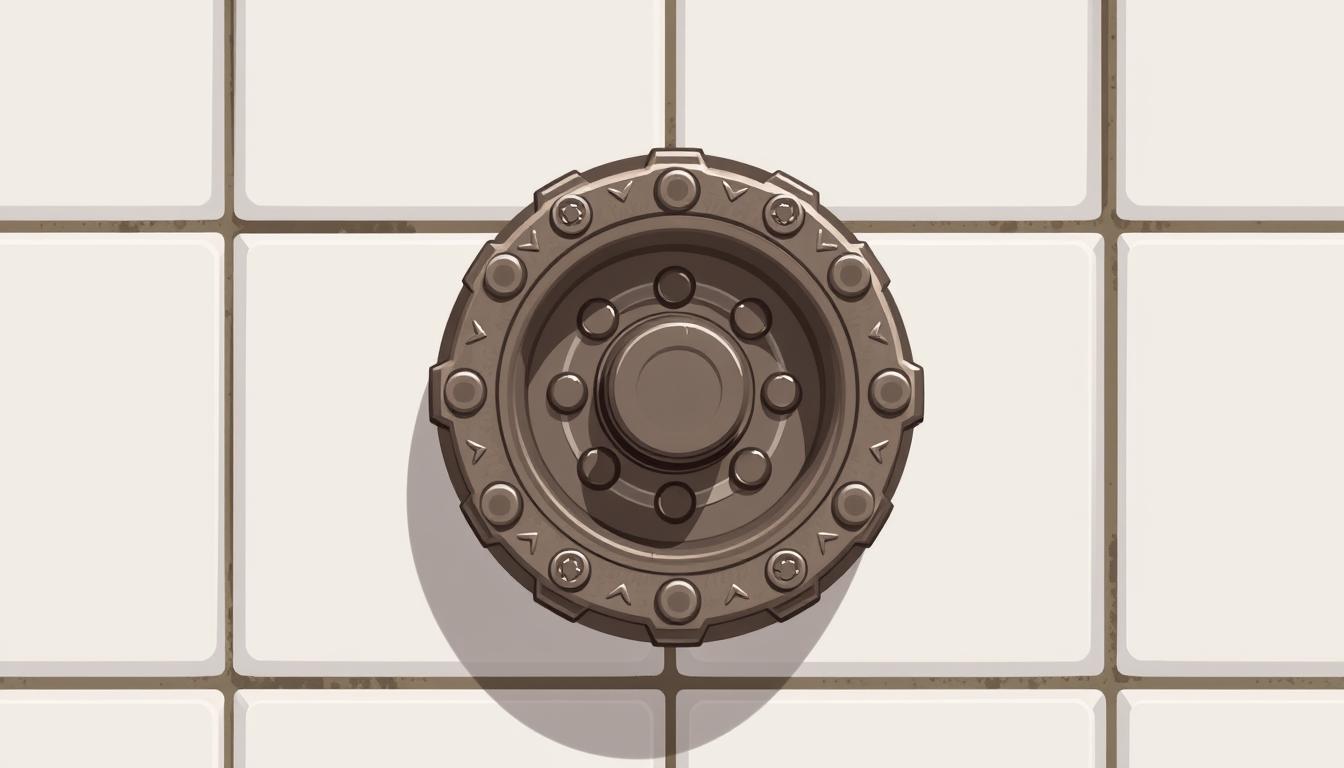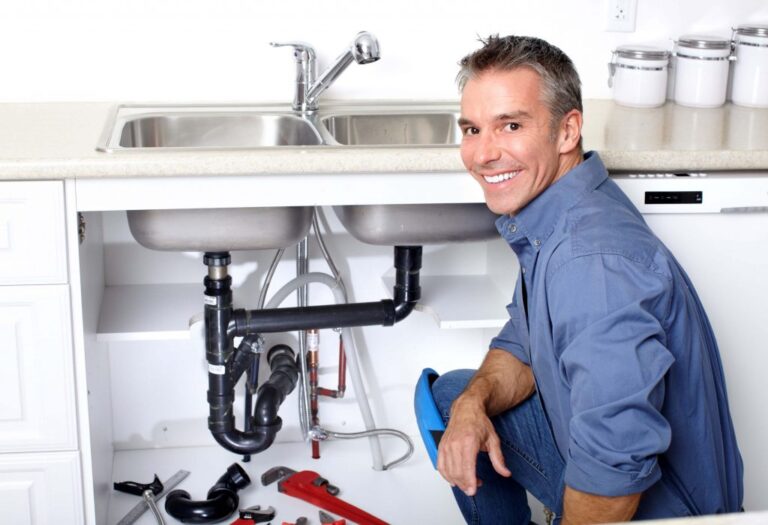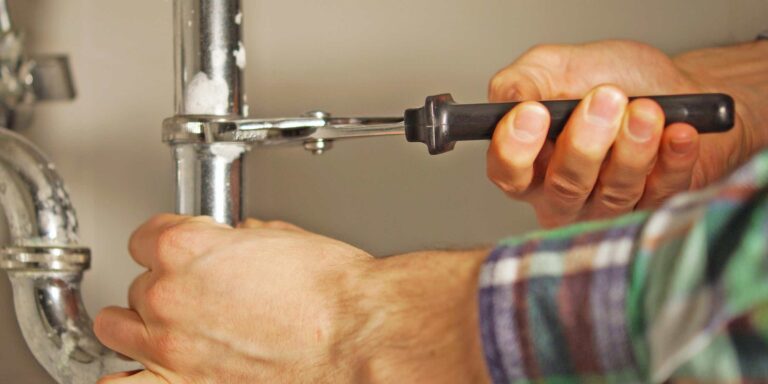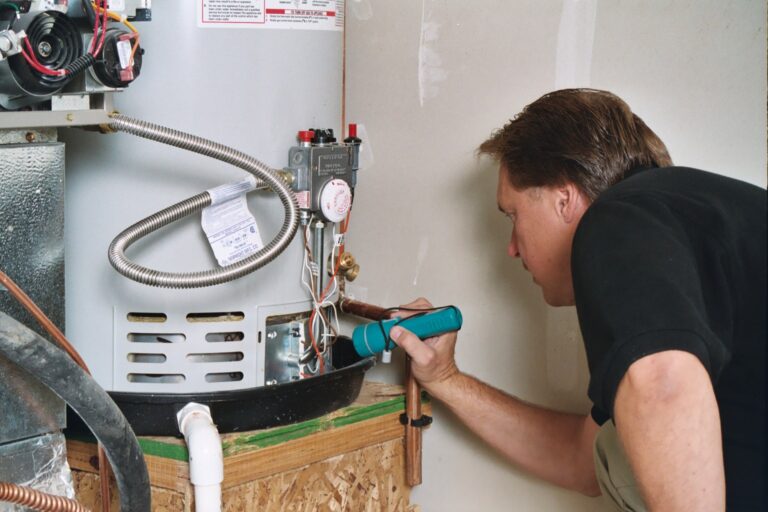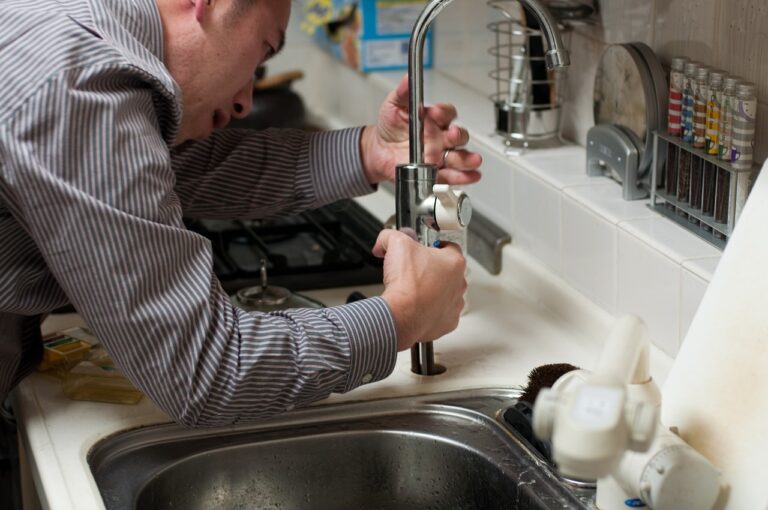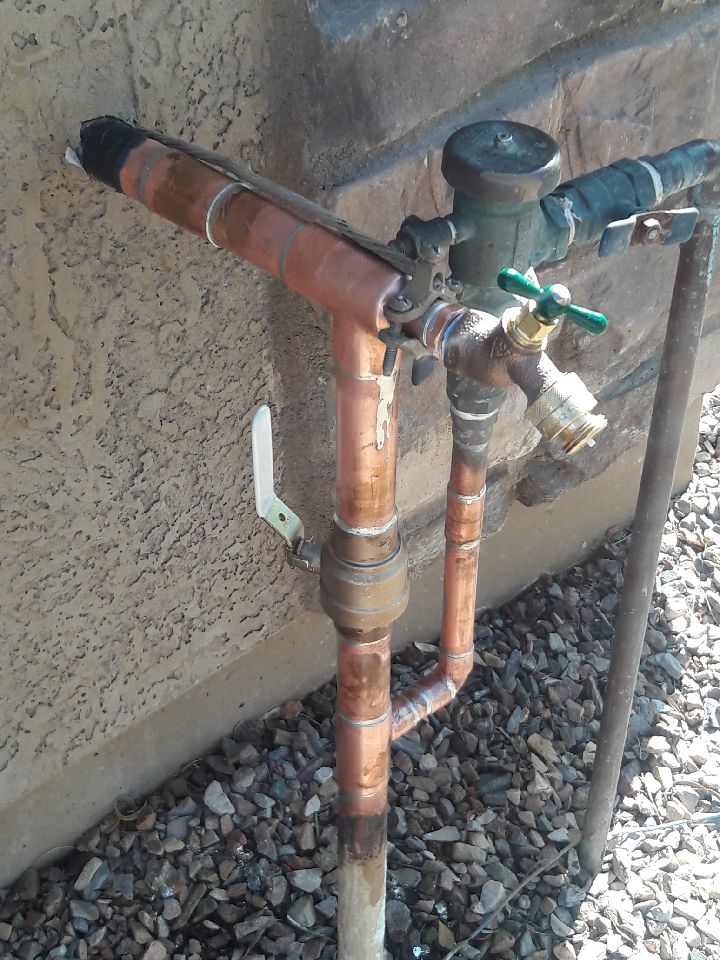Where to Find Your Home’s Main Water Shut-Off Valve—and How to Use It
It’s important to know where your home’s water shut-off valve is. This is key in emergency situations. A burst pipe or leak can cause a lot of damage if not fixed fast.
The shut-off valve in most homes has a lever. This lever controls a ball valve, making it easy to turn off the water. Knowing where this valve is and how to use it can help avoid big problems and expensive fixes.
Knowing how to use your home’s water shut-off can really help in emergencies. It’s vital to learn about your home’s system. This way, you’ll be ready for any situation.
Understanding the Importance of the Main Shut Off Valve
Knowing about your main shut-off valve is vital to keep your home safe from water disasters. This important part of your plumbing system is often ignored until a crisis happens.
What is a Main Shut Off Valve?
A main shut-off valve is a key device that manages water flow to your whole house. It’s found where the water line meets your home. It lets you turn off the water in emergencies, like burst pipes or big leaks.
Key functions of a main shut-off valve include:
- Controlling water supply to the entire house
- Preventing extensive water damage during emergencies
- Facilitating plumbing maintenance and repairs by isolating the water supply
Why is it Crucial for Homeowners?
The main shut-off valve is essential for homeowners. It offers a fast and effective way to stop water flow in emergencies. This helps prevent big damage to your property.
For example, if a pipe bursts, shutting off the main water supply can avoid a lot of water damage. This saves homeowners from expensive repairs and mold problems.
“A well-maintained main shut-off valve is your first line of defense against the chaos caused by plumbing emergencies.”
Common Issues Prevented by Proper Valve Use
Using your main shut-off valve correctly can stop many common problems. These include:
- Water damage from burst pipes or leaking appliances
- Mold growth from too much water
- High repair costs from water leaks
By knowing how to use your main shut-off valve, you can avoid these issues. This keeps your home safe and secure.
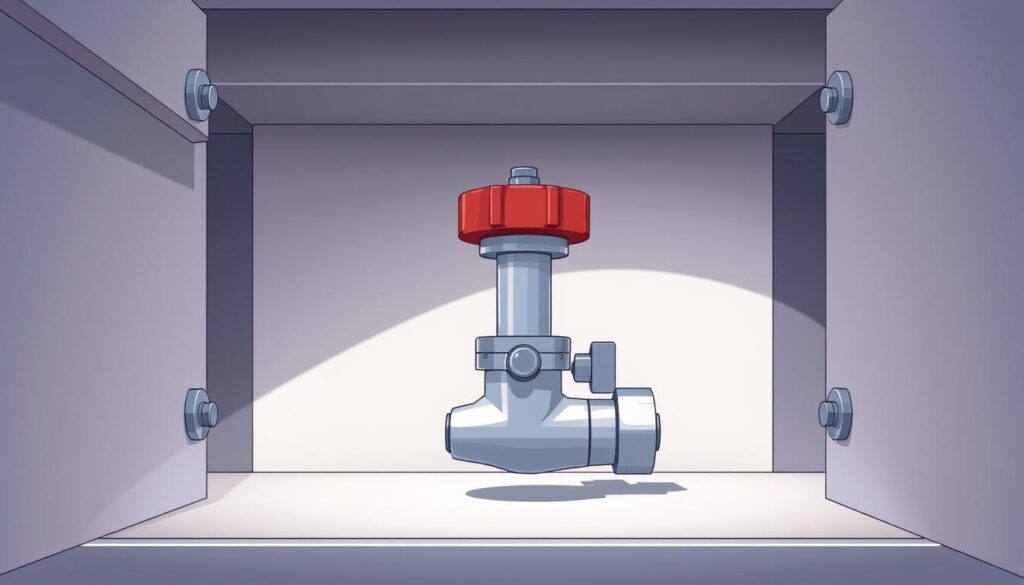
Typical Locations of Main Shut Off Valves in Homes
Knowing where your home’s main water shut-off valve is can be a big help in plumbing emergencies. This valve controls your home’s water supply. Its spot can change based on your home’s type and plumbing setup.
Basements: The Most Common Spot
In many homes, the main shut-off valve is in the basement. It’s usually near the water heater or where the water line comes in. Make sure this valve is easy to reach and not blocked by stuff.
Crawl Spaces: Less Obvious but Important
For homes with crawl spaces, the main shut-off valve is there. You might need a flashlight and some effort to find it. It’s good to check the valve’s condition often to avoid problems.
Outside the Home: What to Look For
Sometimes, the main shut-off valve is outside, near the water meter or where the water line comes in. This is common in areas where the water line comes from the street. Know where it is and keep it clear of debris or plants.
Behind Appliances: Hidden Valves
Now and then, the main shut-off valve is hidden behind appliances like water heaters or laundry machines. It’s important to look behind these to find the valve. Make sure the area is clear for quick access when needed.
By knowing where these valves are, you can find and use your home’s main water shut-off valve easily. This can save time and prevent damage in plumbing emergencies.
Identifying Your Main Shut Off Valve in Different Home Types
Knowing where your main shut-off valve is important, no matter your home type. It can be in a single-family home, apartment, condo, or mobile home. The location varies based on your home.
Single-Family Homes
In single-family homes, the main shut-off valve is usually in the basement. It’s near the water meter or where the water line enters. It can also be in a crawl space or outside near the foundation.
Key locations to check:
- Near the water heater
- In the garage
- Under the kitchen sink
Apartments and Condos
In apartments and condos, the main shut-off valve might be inside your unit or in a common area. It’s often near the water meter or in a utility closet.
Tips for locating it:
- Check with your landlord or building management
- Look in the kitchen or bathroom near the water supply lines
- Inspect utility closets or areas with plumbing fixtures
Mobile Homes
Mobile homes have their main shut-off valve under the home or near the water connection. Knowing your mobile home’s plumbing layout is key.
Common locations:
- Underneath the mobile home
- Near the exterior water hookups
- In a designated plumbing access panel
Here’s a table to help you find the main shut-off valve in different homes:
| Home Type | Typical Locations |
|---|---|
| Single-Family Homes | Basement, crawl space, near water meter, or outside near the foundation |
| Apartments and Condos | Within the unit, near the water meter, or in a utility closet |
| Mobile Homes | Underneath the home, near exterior water hookups, or in a plumbing access panel |
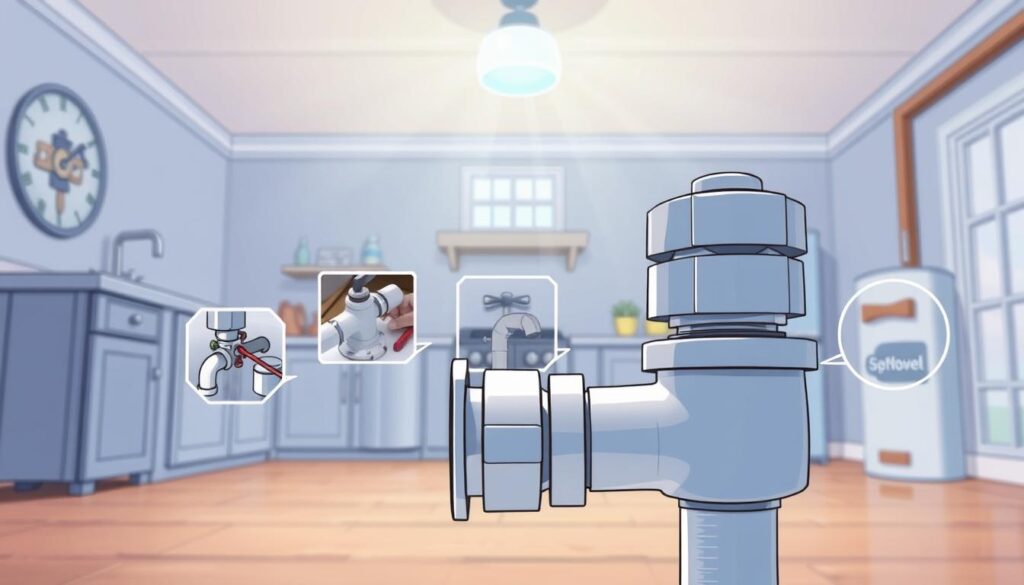
Knowing where your main shut-off valve is helps you manage your home’s plumbing. It’s important for fixing leaks or maintenance.
Steps to Locate Your Main Shut Off Valve
Finding your main shut-off valve is key to keeping your plumbing in check. It saves you time and money in emergencies.
Gather Necessary Tools
First, get the tools you need. A flashlight is vital for dark spots like basements. You’ll also need a wrench or pliers to turn the valve. Having these tools ready makes the search easier.
Inspecting Common Areas: A Step-By-Step Guide
To find your main shut-off valve, follow these steps:
- Start by checking your basement or crawl space, as they’re common spots.
- Look near your water meter, as the valve is often close by.
- Also, check around your water heater or where water lines enter your home.
- If you have a crawl space, don’t forget to look there too.
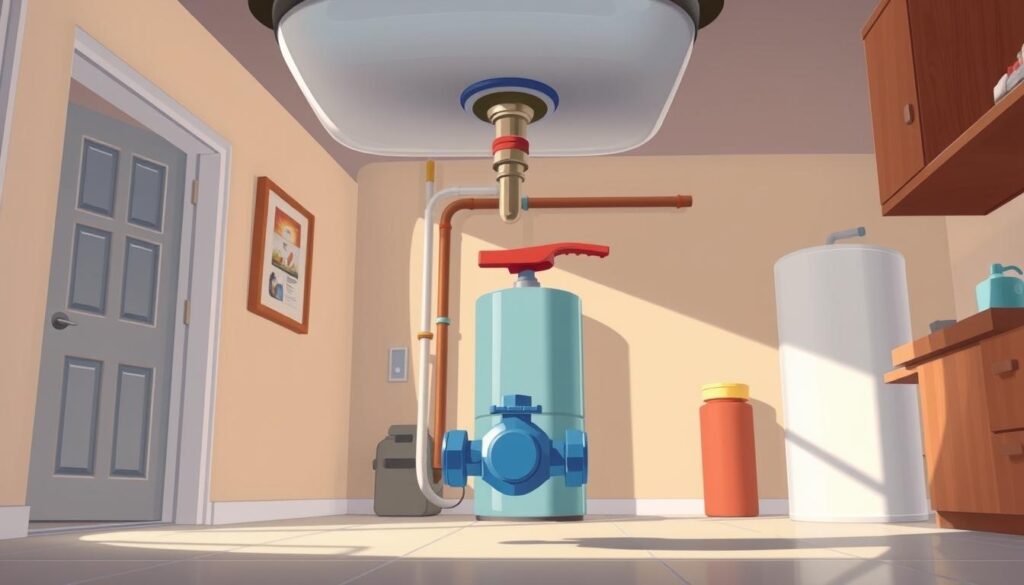
Asking Neighbors or Previous Owners
Stuck? Ask your neighbors or the home’s previous owners for help. They might know where it is. You can also look at your property inspection report or call your local water department for help.
By following these steps, you should find your main shut-off valve quickly. Knowing where it is helps prevent and manage plumbing emergencies.
How to Operate Your Main Shut Off Valve
It’s important to know how to use your main shut-off valve for plumbing emergencies. This valve controls your home’s water supply. It’s key for emergencies or repairs.
Understanding Valve Types: Gate vs. Ball
Main shut-off valves are either gate or ball valves. Gate valves need a handle turn to shut off water. Ball valves require a quarter-turn to block the water flow.
Knowing your valve type is essential. Gate valves are common in older homes. Ball valves are more modern due to their reliability and simplicity.
How to Turn Off the Water Supply
To shut off the water, follow these steps:
- Find your main shut-off valve, usually in the basement, crawl space, or outside near the water meter.
- For gate valves, turn the handle clockwise until it stops.
- For ball valves, turn the handle a quarter-turn to block the pipe.
- Check the water supply is off by turning on a faucet. If it’s not, you might need to adjust the valve or look for other shut-offs.
When to Use the Shut Off Valve
Knowing when to use your emergency water shut off valve is key. Use it for burst pipes, big leaks, or major repairs. Regular use keeps the valve working well.
Tell all household members where and how to use the main shut-off valve. This way, everyone is ready for emergencies.
Regular Maintenance for Your Main Shut Off Valve
Keeping your main shut-off valve in top shape is essential. It ensures your residential shut off valve works well when you need it most.
Checking for Leaks and Damages
Check your shut off valve for home often for leaks or damage. Look for water spots, rust, or corrosion. Even small leaks can grow into big problems if not fixed.
Tips for Keeping the Valve Functional
To keep your valve working right, follow these tips:
- Turn the valve now and then to make sure it moves easily.
- Wipe the valve and its area clean to stop dirt from building up.
- Look at the valve’s connection to the water line for wear signs.
Signs Your Valve Needs Replacement
If you see these signs, it might be time for a new main shut-off valve:
- It’s hard to turn the valve.
- You see corrosion or rust.
- Leaks that won’t stop.
Regular checks can spot these problems early. This keeps your shut off valve for home in top condition.
Emergency Situations and Your Main Shut Off Valve
When you face emergencies like burst pipes or leaks, acting fast is key. The first step is to shut off the main water supply. Knowing where your main shut-off valve is and how to use it can save your home from water damage.
When to Shut Off the Valve Immediately
You need to shut off the main water valve right away if you have:
- A burst pipe or significant leak
- Water gushing out uncontrollably
- During a plumbing emergency that requires urgent attention
Quick action can stop more damage and give you time to fix the problem.
How It Can Prevent Major Water Damage
Turning off the main water supply can stop water from entering your home. This action can:
- Reduce the risk of structural damage to your home
- Minimize the chance of mold growth from water exposure
- Protect your belongings from water damage
Prompt action is key to lessening the impact of a water-related emergency.
Steps to Take After Shutting Off
After turning off the main water supply, follow these steps:
- Assess the situation to determine the extent of the damage or issue.
- Call a professional plumber to find and fix the problem.
- Start drying out wet areas to avoid more damage.
- Take photos of the damage for insurance, if needed.
Following these steps can help you deal with a water-related emergency better.
Troubleshooting Common Issues with the Shut Off Valve
Fixing your main shut-off valve isn’t hard with the right help. It’s a key part of your home’s plumbing. Knowing how to solve common problems can prevent water damage and expensive fixes.
Difficulty Turning the Valve
Having trouble with your main shut-off valve? It might be corroded, have mineral buildup, or just need some use. Try using lubricant or a valve wrench for better control. But don’t push too hard to avoid damage.
Tom Smith, a seasoned plumber, says, “Regular maintenance keeps your main shut-off valve working well. It’s not just for emergencies; it keeps the valve from causing problems.”
Signs of Corrosion or Rust
Corrosion or rust on your main shut-off valve is a big problem. It can cause leaks or make the valve fail. Check your valve often for signs like discoloration, flaking, or rust spots. If you see these, act fast.
| Signs of Corrosion/Rust | Possible Causes | Recommended Actions |
|---|---|---|
| Discoloration or Rust Spots | Exposure to water, oxygen | Inspect regularly, consider replacement |
| Flaking or Peeling | Advanced corrosion | Replace the valve |
| Leaks Around the Valve | Deterioration of valve seals | Replace seals or the entire valve |
When to Call a Professional Plumber
Many problems with your main shut-off valve can be fixed yourself. But, there are times when a pro is needed. If you’re not sure what to do or if the issue won’t go away, call a plumber.
As the
“National Kitchen and Bath Association recommends having a professional inspect your plumbing system, including the main shut-off valve, every few years to ensure it’s in good working condition.”
Being proactive with your main shut-off valve keeps your plumbing safe and working right. Regular checks and knowing when to call a pro can save you from big repairs and water damage.
Frequently Asked Questions About Main Shut Off Valves
Homeowners often wonder about their main shut off valves. They ask about maintenance and what to do in emergencies. Knowing the answers can help you manage your water shut off better.
Checking Your Valve
It’s wise to check your main shut off valve every 6-12 months. Turn it clockwise to shut off the water and look for leaks or damage.
Self-Installation Considerations
Installing a main shut off valve yourself is possible. But, it’s better to hire a professional plumber. This is true if you’re not sure where the valve is in your home.
Finding a Missing Valve
If you can’t find your main shut off valve, check the basement, crawl space, or near the water meter outside. If you can’t find it, look at your home’s blueprints or call a professional plumber for help.
